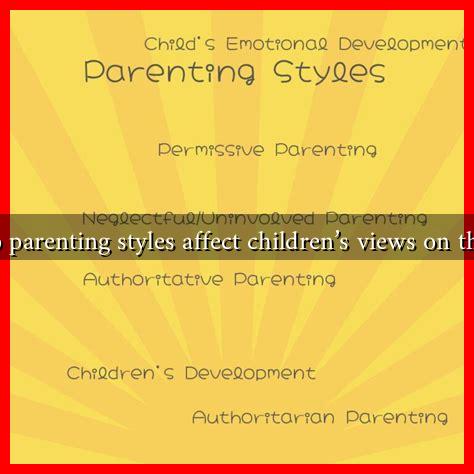-
Table of Contents
- How Do Parenting Styles Affect Children’s Views on the Hijab?
- Understanding Parenting Styles
- The Impact of Parenting Styles on Views of the Hijab
- Authoritative Parenting: Encouraging Understanding and Choice
- Authoritarian Parenting: Imposing Beliefs and Expectations
- Permissive Parenting: Lack of Guidance
- Neglectful Parenting: A Lack of Cultural Connection
- Conclusion: The Role of Parenting in Shaping Cultural Identity
How Do Parenting Styles Affect Children’s Views on the Hijab?
The hijab, a traditional headscarf worn by many Muslim women, is often a subject of discussion and debate, particularly in multicultural societies. The way children perceive the hijab can be significantly influenced by their parents’ attitudes and parenting styles. This article explores how different parenting styles shape children’s views on the hijab, providing insights into the implications of these styles on cultural identity and personal choice.
Understanding Parenting Styles
Parenting styles can be broadly categorized into four main types, each with distinct characteristics:
- Authoritative: This style is characterized by high responsiveness and high demands. Authoritative parents set clear expectations while also being supportive and nurturing.
- Authoritarian: Authoritarian parents are highly demanding but low in responsiveness. They enforce strict rules and expect obedience without much room for dialogue.
- Permissive: Permissive parents are responsive but not demanding. They are lenient and allow considerable freedom, often avoiding setting firm boundaries.
- Neglectful: Neglectful parents are low in both responsiveness and demands. They are often uninvolved in their children’s lives, which can lead to feelings of insecurity.
The Impact of Parenting Styles on Views of the Hijab
Children’s perceptions of the hijab are often a reflection of their parents’ beliefs and attitudes. Here’s how different parenting styles can influence these views:
Authoritative Parenting: Encouraging Understanding and Choice
Authoritative parents tend to foster an environment where children can explore their cultural and religious identities. They encourage open discussions about the hijab, allowing children to ask questions and express their feelings. This approach can lead to:
- A deeper understanding of the cultural significance of the hijab.
- Empowerment to make personal choices regarding wearing the hijab.
- A balanced view that respects both personal choice and cultural heritage.
For example, a study published in the Journal of Civil Economics found that children raised in authoritative households were more likely to embrace their cultural practices, including the hijab, as a form of personal expression rather than an obligation.
Authoritarian Parenting: Imposing Beliefs and Expectations
In contrast, authoritarian parents may impose strict rules regarding the hijab without allowing for discussion. This can lead to:
- Resentment towards the hijab as a symbol of oppression.
- A lack of understanding of its cultural significance.
- Rebellion against imposed beliefs during adolescence.
Research indicates that children from authoritarian backgrounds may reject the hijab entirely, viewing it as a symbol of control rather than a personal choice.
Permissive Parenting: Lack of Guidance
Permissive parents may allow their children to make their own choices regarding the hijab but often fail to provide the necessary context or guidance. This can result in:
- Confusion about the hijab’s significance.
- A superficial understanding of cultural practices.
- Inconsistent attitudes towards wearing the hijab.
Children raised in permissive environments may struggle to form a coherent identity related to the hijab, leading to ambivalence about their cultural heritage.
Neglectful Parenting: A Lack of Cultural Connection
Neglectful parenting can lead to a complete disconnection from cultural practices, including the hijab. Children in these environments may experience:
- A lack of awareness about the hijab and its significance.
- Feelings of alienation from their cultural identity.
- Difficulty in forming a positive self-image related to their heritage.
Without parental guidance, children may not develop a sense of pride in their cultural practices, including the hijab.
Conclusion: The Role of Parenting in Shaping Cultural Identity
In summary, parenting styles play a crucial role in shaping children’s views on the hijab. Authoritative parenting fosters understanding and personal choice, while authoritarian styles may lead to resentment and rebellion. Permissive and neglectful parenting can result in confusion and disconnection from cultural identity. As society continues to navigate discussions around cultural practices, it is essential for parents to engage in open dialogues with their children about the hijab, promoting a sense of pride and understanding in their cultural heritage.
Ultimately, the way children perceive the hijab is not just a reflection of their personal beliefs but also a testament to the values instilled in them by their parents. By fostering an environment of understanding and respect, parents can help their children navigate their cultural identities with confidence and pride.

